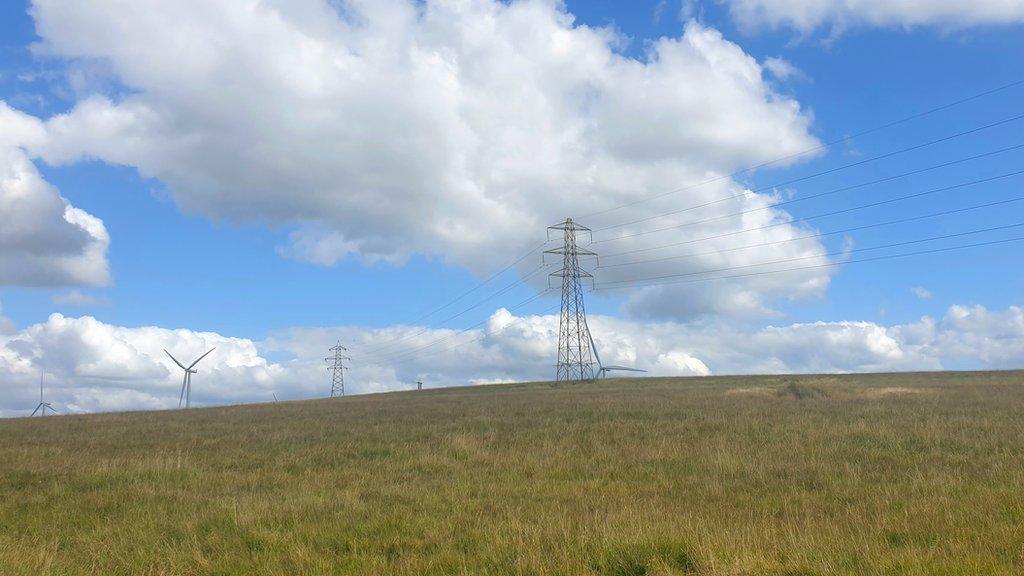Electricity to be 100% renewable by 2035, say Welsh ministers
- Published
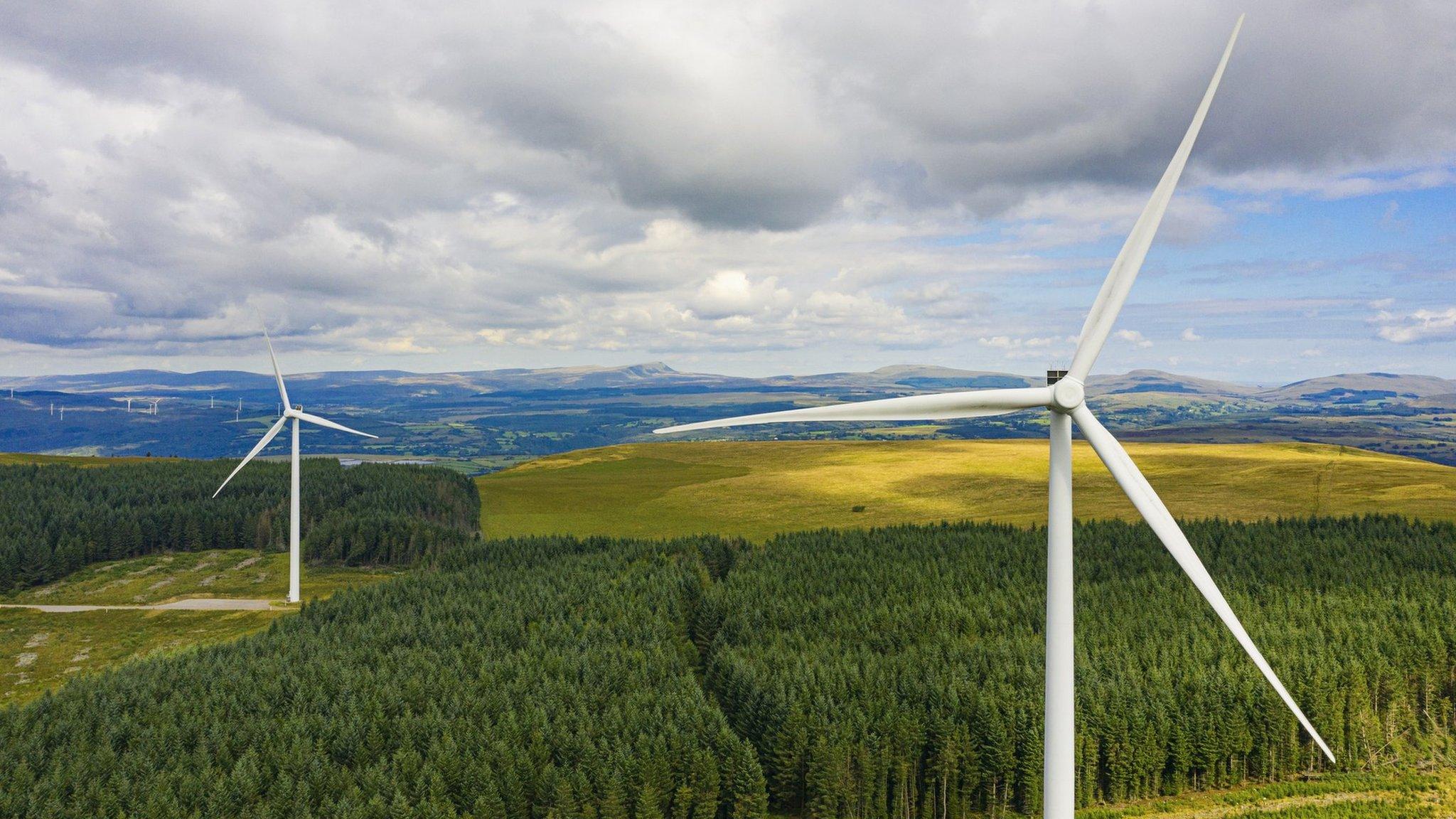
More heat pumps in homes and community energy projects are part of the Welsh government's target to meet 100% of its electricity needs from renewables in 12 years' time.
The latest estimates show renewables cover 56% of our energy consumption but Climate Change Minister Julie James called the new target "ambitious but credible", even with energy demand set to soar with the move towards electric cars and away from gas boilers.
It is considerable scaling up of ambition, as the previous target was to reach 70% by 2030.
The consultation includes plans to increase the capacity of renewable energy but also to reduce the demand for it.
But there is no room for complacency, according to the leading think tank the Institute for Welsh Affairs (IWA).
Auriol Miller from the IWA said "there's nothing automatic" about hitting these targets, and the government must focus on "finding new and alternative sources of energy", as well as reducing consumption through retrofitting homes.
Speaking in the Senedd, the minister announced a consultation on the new targets, which "propose a pathway for us to meet the equivalent of 100% of our annual electricity consumption for renewable electricity by 2035, and to continue to keep pace with consumption thereafter".
The plans include a target for at least 1.5 gigawatts (GW) of energy capacity to come from smaller-scale community-owned projects.
And, subject to strengthened support from the UK government and reductions in cost, the minister wants 5.5GW of energy to be provided by heat pumps in the same time-frame.

Julie James has announced a consultation on the target
The latest estimates, published in 2020, show Wales already meets 56% of it electricity needs from renewable sources like wind, sun and water, but to reach 100% in just over a decade many barriers will need to be overcome.
So how will they do it?
Improving infrastructure
Energy infrastructure, like the grid and connecting the energy generated by windfarms in the sea to that grid, are some of the huge challenges.
As part of Tuesday's announcement, the minister said the Welsh government will provide £1m of funding to explore the potential of offshore wind in the Celtic Sea.
The money will be match-funded by Associated British Ports (ABP) which says it will be used to "kick-start the development of a major green energy hub at Port Talbot".
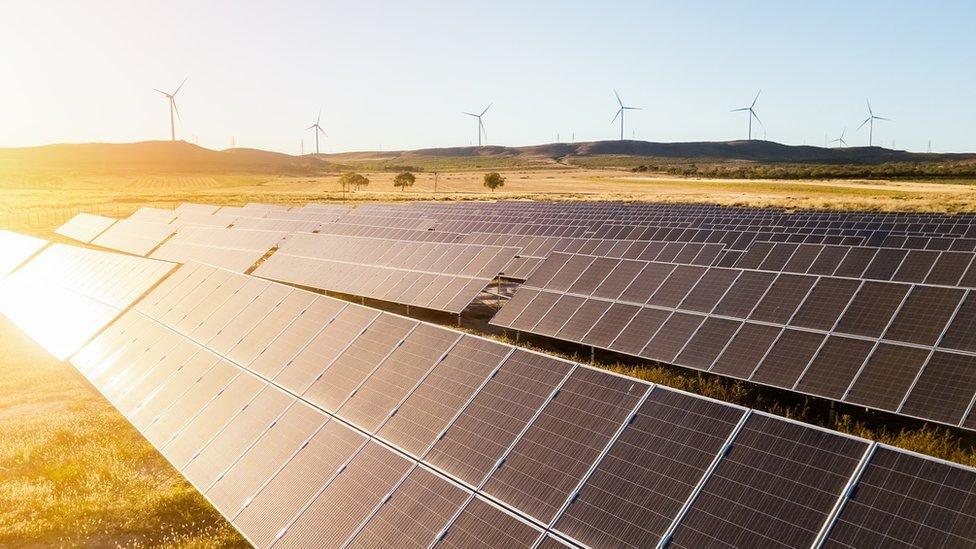
Andrew Harston from ABP said the £2m "is key to the construction of transformational infrastructure, which will enable the manufacturing, integration and assembly of floating offshore wind components at Port Talbot".
Julie James conceded that the Welsh government's investment of £1m was a drop in the ocean, considering the level of funding needed to deliver floating wind offshore in south west Wales.
But she said the investment signals to the industry Welsh ministers' commitment, and added "this is not the end of our support".
Meanwhile, the UK government has acknowledged that a "step-change is needed" to boost grid capacity in Wales.
A group of MPs has published a report looking at the problems with the grid here and, in a response published on Tuesday, the UK government said it will continue to work on "strategic planning, regulatory approval, planning consents and streamlining connections across Great Britain, including Wales".
Streamlining planning
Planning procedures must be improved, according to industry representatives.
Manon Kynaston, deputy director of RenewableUK Cymru, a trade body that represents the industry, welcomed the revised target and agreed that it is ambitious but achievable.
However, she said there is a great deal of work to be done to not only reach the targets but to keep those benefits in Wales.

Manon Kynaston welcomes the announcement but warns that there is a long way to go
"To be able to reach those targets we need a system that is diverse and flexible, that includes fixed off shore wind from the coast of north Wales but also the significant opportunity we have of floating offshore wind in the Celtic Sea.
"We need to unlock some key barriers, mainly consenting and licensing, and also working closely with the UK government to ensure we have investment in our ports and infrastructure," she said.
"We really need anticipatory investment to make sure the grid is fit for purpose to take advantage of the opportunities."
Community projects
Central to the Welsh government's vision is ensuring the benefits stay in local communities as much as possible, and the profits do not leave Wales to big multinational companies.
Ynni Ogwen is one example of a community project the minister would like to see more of.
It is a hydroelectric project on the Afon Ogwen near Bethesda in Gwynedd, which generates electricity and ploughs the profits back into the community.
Recently the scheme gave £20,000 back to help ease the cost of living crisis in the area.
Meleri Davies, a founder member of Ynni Ogwen, said it is great that there are new targets but the Welsh government "must ensure the projects are community based".
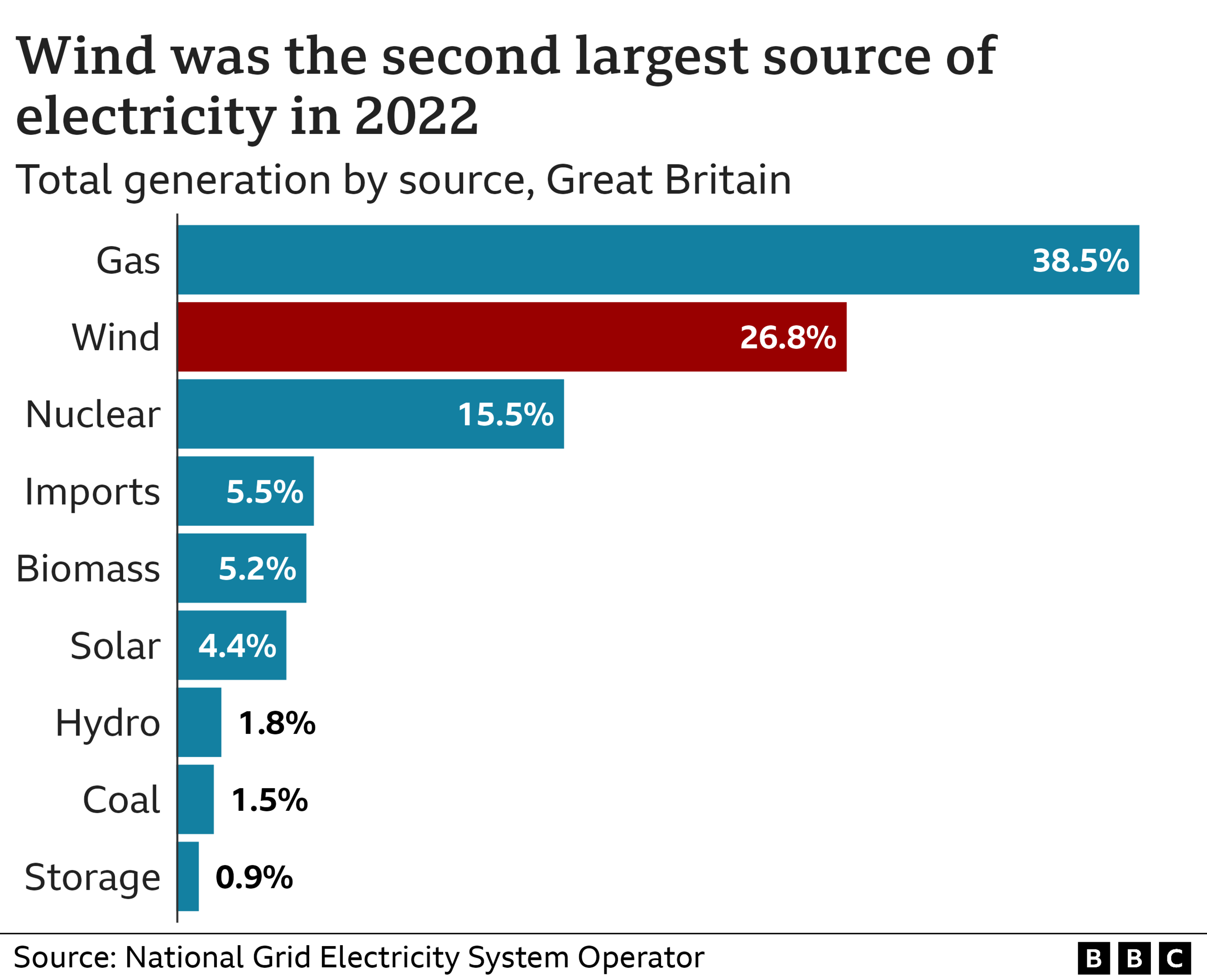
"We need more projects like this simply because of the economic, social and environmental impact of this scheme," she said.
But Ms Davies said she would like the government to go further and ensure the energy they produce can be used locally.
"At the moment the energy we produce here is exported to the grid who pay us for it.
"If we could use that energy to power homes locally at a reduced tariff that would be tremendous.
"That's the kind of aspiration we'd like the Welsh government to move towards."
Ms Davies also said that more funding is needed to make it easier for projects like Ynni Ogwen to get off the ground.
"We need funding, last year there were only four community owned projects developed.
"You need a lot of investment, a grant subsidy or support, to enable this kind of project to happen."
Reducing consumption
With consumption of electricity expected to rise in coming years, as we move towards electric vehicles and away from gas boilers, the pace of the rollout of renewable energy will need to increase if we are to have a chance of reaching the 100% target.
Part of that ambition is to encourage more of us to install heat pumps, but that is "not happening quick enough", according to Auriol Miller.
She said it is important not to put too much responsibility on individuals.
She said: "Welsh government [and the UK government] needs to be thinking about the investment for that to happen and then the deployment of that as well."
"So retrofitting homes is great, but it's not happening quick enough at the moment."
It seems the urgency to act is not lost on the industry, which says it is poised to take advantage of the opportunities available but that it is up to the governments to do more to ensure projects move quicker.
"We are in a climate emergency, the time to move is now," said Manon Kynaston.
And time is of the essence according to Auriol Miller.
"We know from the global climate change challenge that we've got ten years really to make a difference in terms of safeguarding the future of our planet.
"That goes for us here in Wales too."

WILD MOUNTAINS OF SNOWDONIA: Five farming families open their gates and share their lives
IOLO: A WILD LIFE: Iolo delves into the archives from the past 25 years

- Published12 December 2022
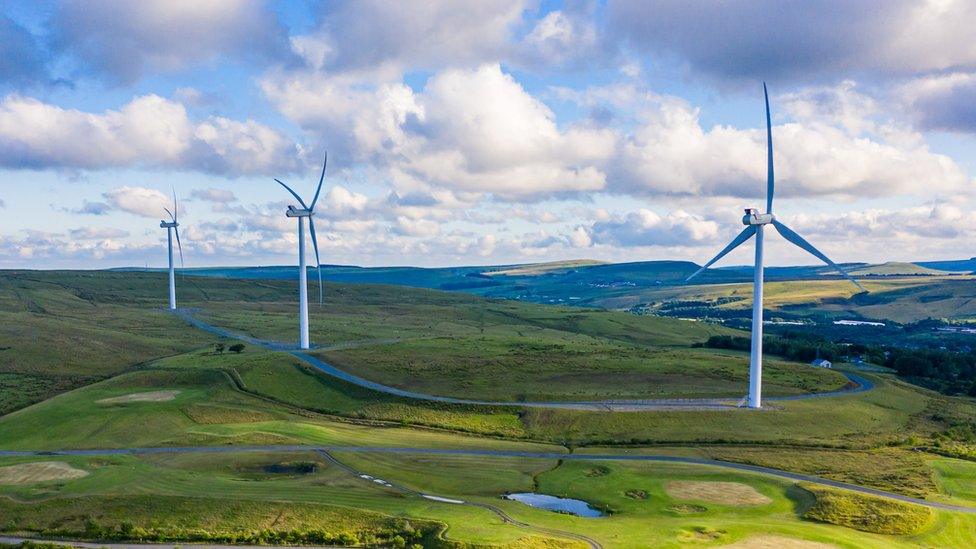
- Published11 November 2021
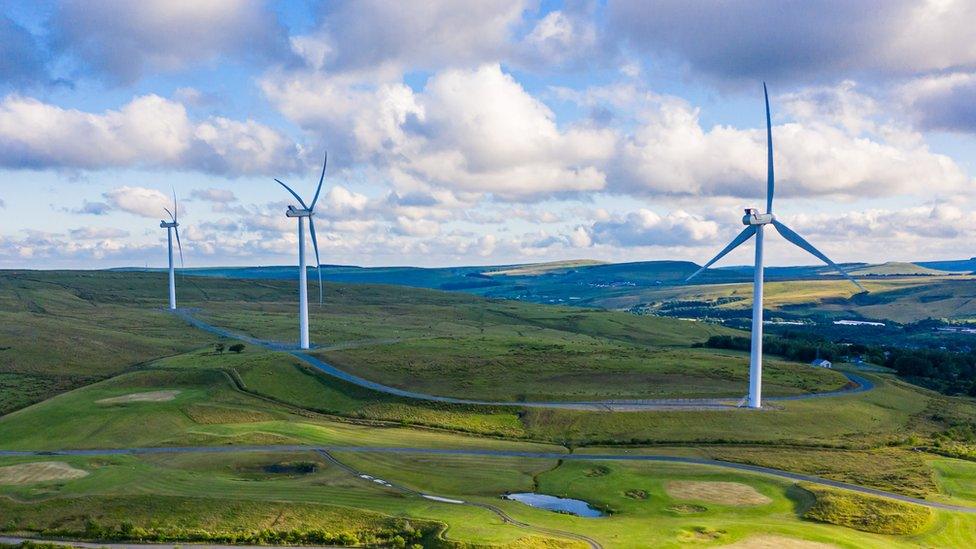
- Published7 November 2022
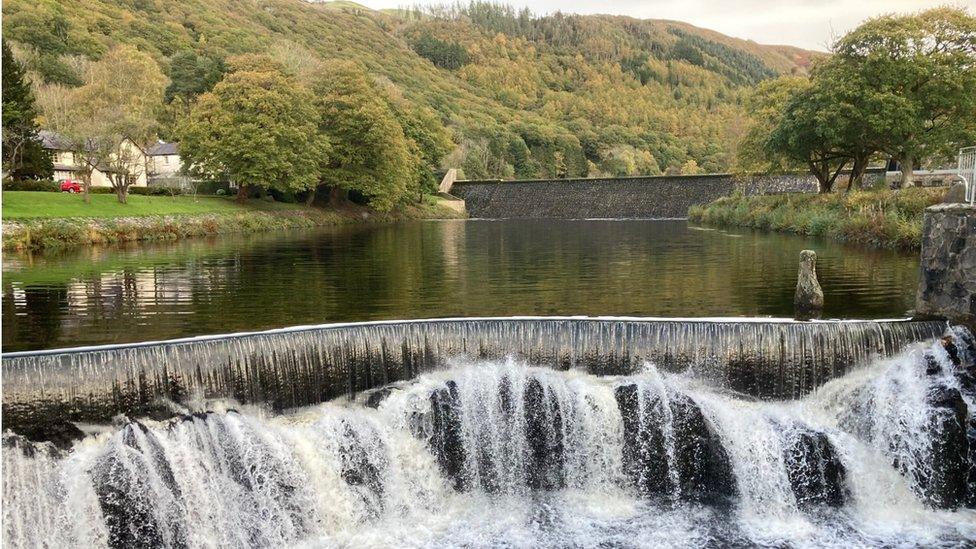
- Published30 August 2022
